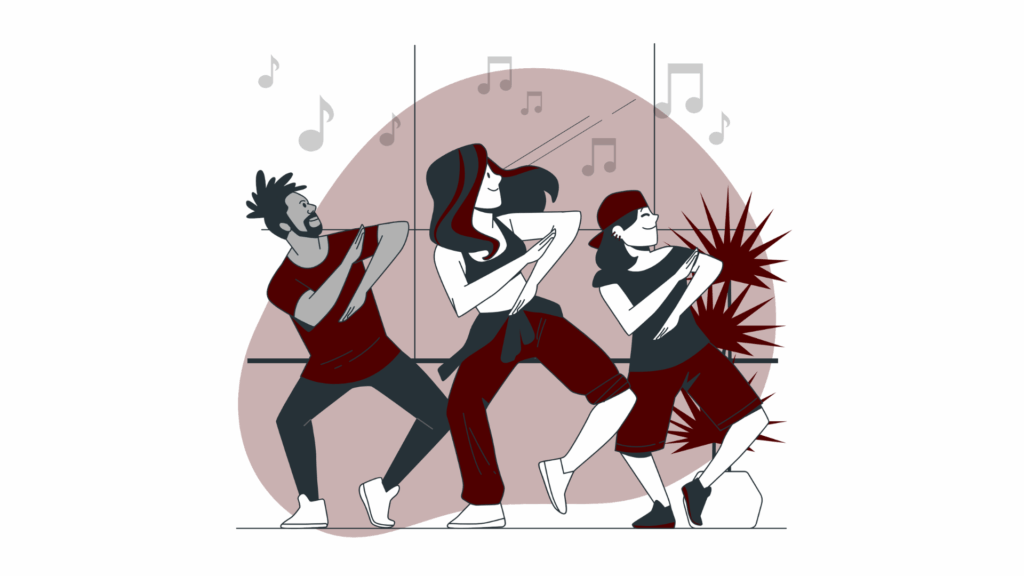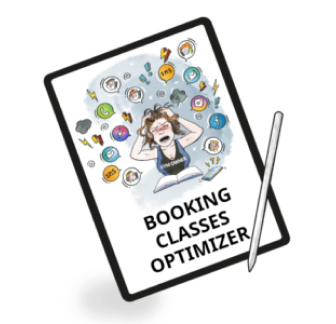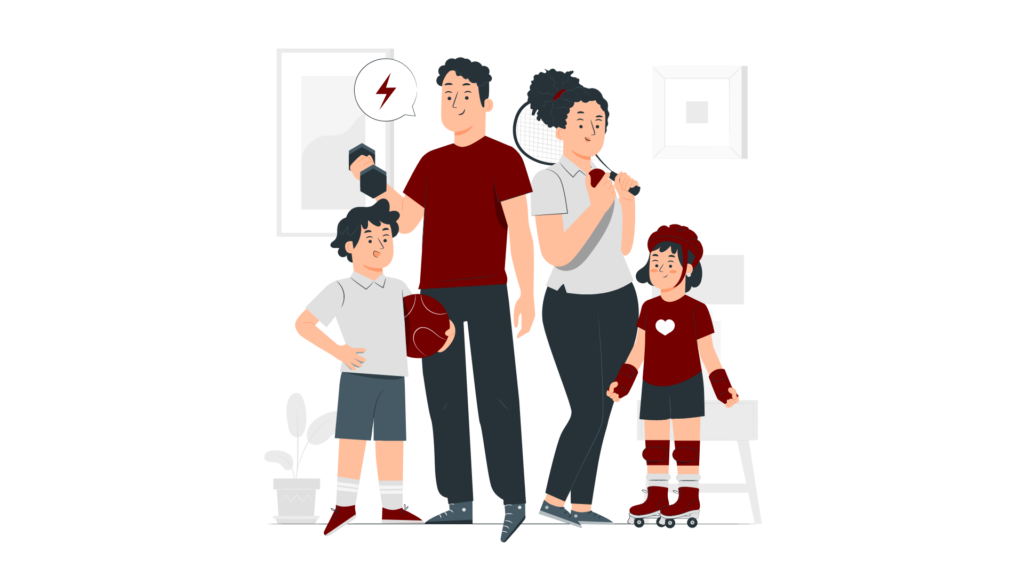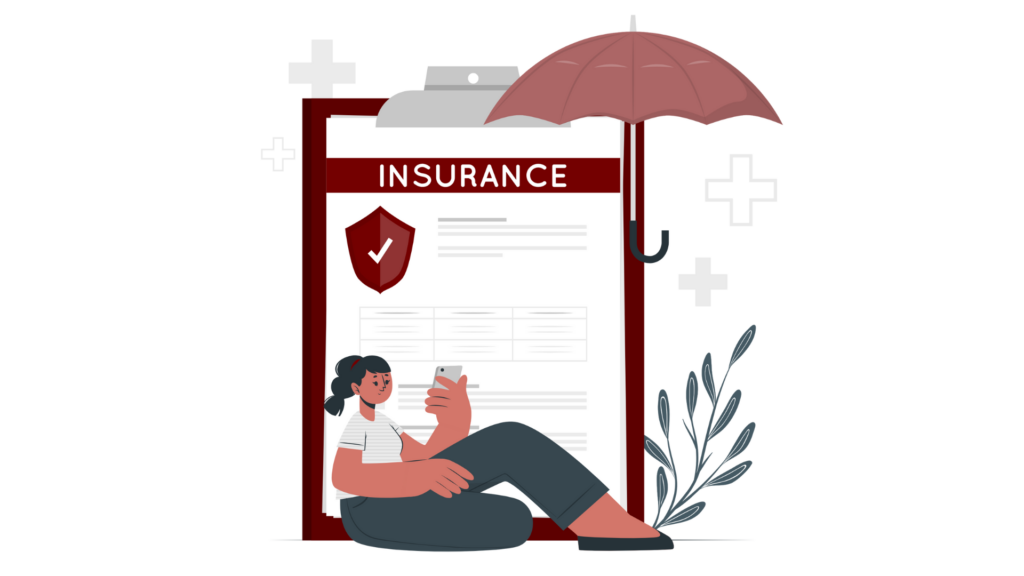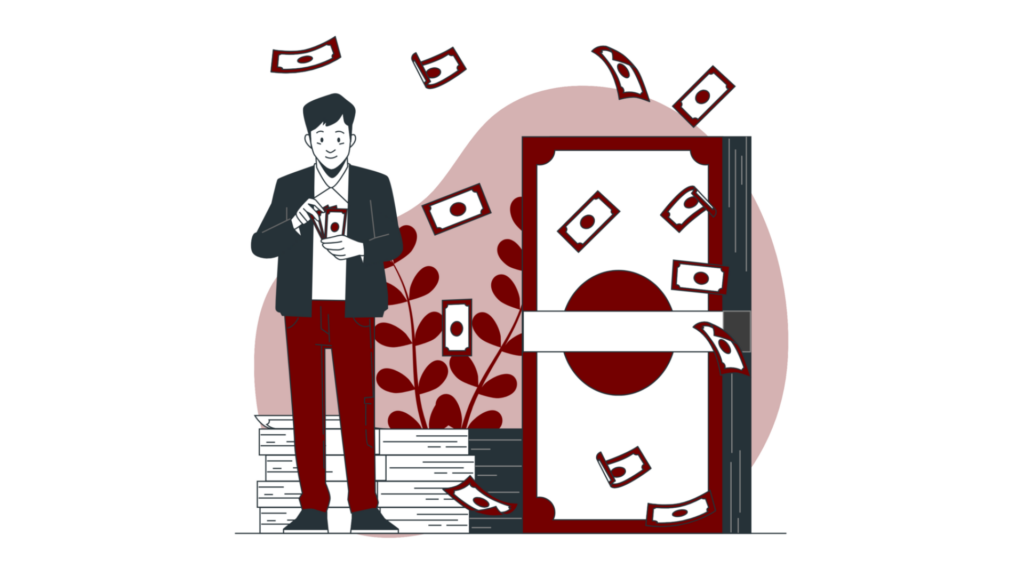Imagine transforming your passion for styles like ballroom, swing, salsa, or hip-hop into a fulfilling profession. Becoming a dance teacher offers a unique path to guide students in dance, incorporating essential elements of technique, performance, and artistic expression into their learning.
Dance education today comes in many forms, from formal routes like earning a bachelor’s degree in dance to hands-on learning in community studios. As a dance teacher, you’ll work with students in dance, incorporating essential elements of technique, performance, and creativity into every lesson.
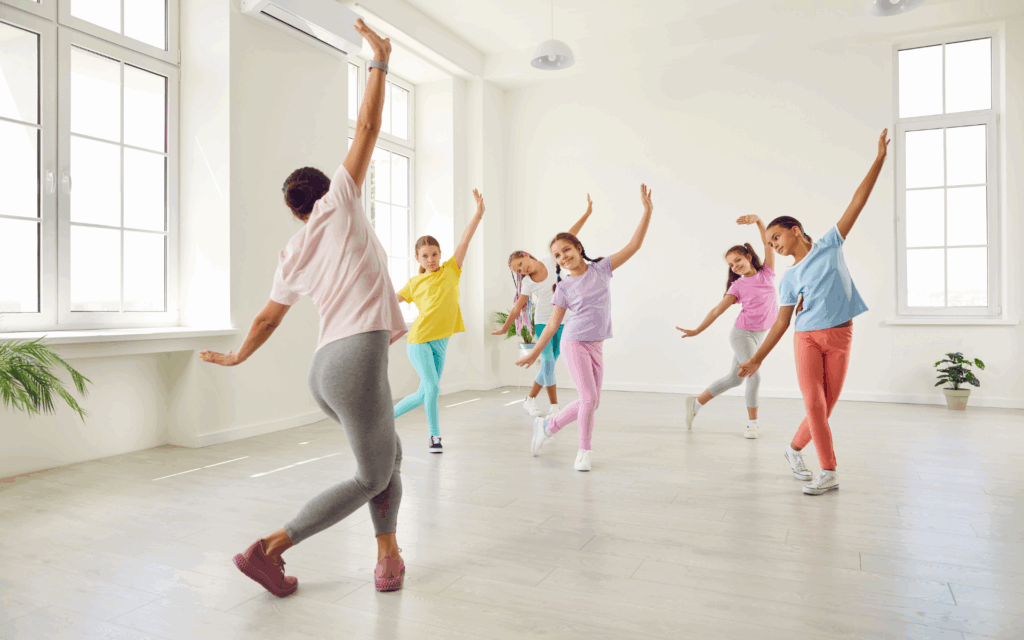
If you’re aiming to build your dancing career in 2025, understanding the necessary steps is key. This article provides your roadmap, detailing 9 crucial steps to launch your journey as a dance instructor.
Key Takeaways
- Foundation is Key: A strong personal background in dance technique combined with a genuine passion for teaching and sharing knowledge forms the essential base for a dance teaching career.
- Diverse Educational Paths: There isn't one single route. Options include pursuing formal education (like a Bachelor's or Master's degree in Dance or Dance Education), obtaining certifications from recognized dance organizations (e.g., RAD, ISTD, IDTA), gaining extensive performance experience, or completing studio-specific training.
- Practical Experience Matters: Gain hands-on teaching experience by assisting senior teachers, observing various classes, undertaking internships, or volunteering.
- Cultivate Essential Teaching Skills: Beyond dancing ability, focus on developing strong communication, patience, creativity, adaptability (for different ages, styles, and abilities), classroom, gym software management, and motivational skills.
- Understand Different Teaching Settings: Requirements vary significantly depending on where you aim to teach. K-12 public schools often require a bachelor's degree and state teaching licensure, universities typically require postgraduate degrees, while private studios may prioritize specific style expertise and certifications.
- Embrace Lifelong Learning: The dance field is dynamic. Commit to continuous professional development through workshops, courses, and staying updated on new techniques, styles, and teaching methods to build and sustain your career in 2025 and beyond.
Why Now Is the Perfect Time to Become a Dance Teacher?
Now is an exceptionally opportune moment to embark on a career as a dance teacher, given the surging demand for dance lessons across various sectors, including fitness, arts education, and holistic wellness.
As people increasingly seek engaging and expressive ways to stay active and nurture their creativity, the need for skilled instructors who can impart both precise technique and captivating choreography is at an all-time high.
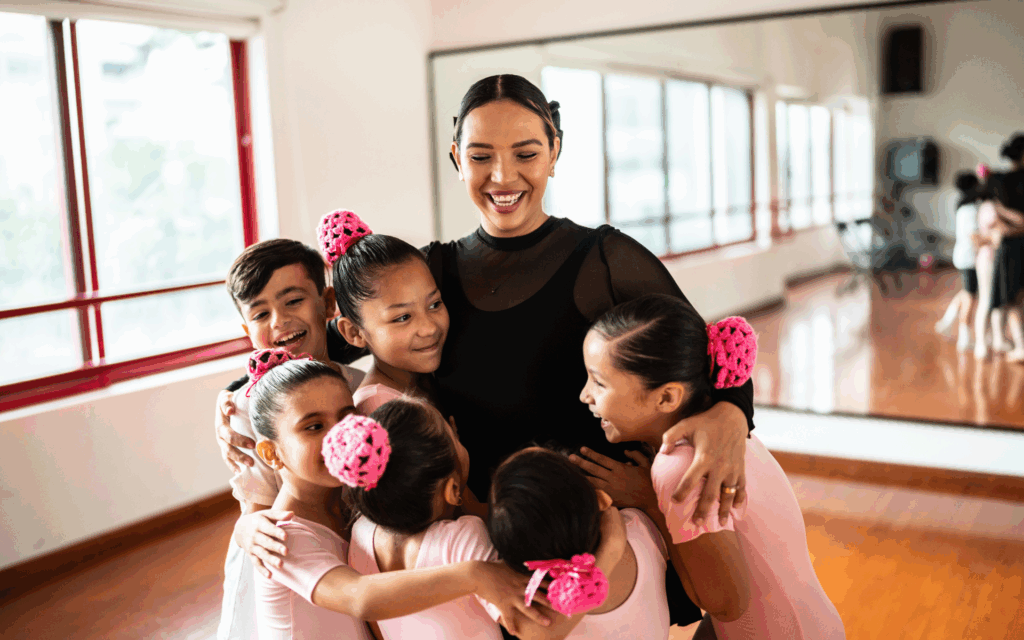
Beyond the personal fulfillment of creative expression, becoming a dance teacher offers significant earning potential and flexible career paths, whether working with a professional dance company, running a private studio, or building a thriving dance troupe.
Unlike the often grueling path of a professional dancer, teaching provides a sustainable and rewarding avenue to share a passion for movement, cultivating a fantastic audience of eager students who can learn from your expertise, regardless of whether your background stems from a rigorous conservatory or extensive performing experience.
Benefits of Becoming a Dance Teacher
What are the main benefits of becoming a teacher?
- Creative Expression: Dance teaching allows you to choreograph routines, select music, and bring your artistic vision to life every day.
- Flexibility: You can set your own schedule, choose your working hours, and balance work with your lifestyle, making it ideal for those seeking a non-traditional career.
- Earning Potential: Dance teachers have opportunities to earn good money, either through hourly employment or by running independent classes and studios.
- Community Impact: You build strong community connections by inspiring and supporting students, promoting wellness, and bringing people together through the joy of dance.

- Personal Growth: Teaching helps you continuously learn and refine your technique and choreography skills, often from both peers and students.
- Career Variety: Opportunities abound in schools, conservatories, dance companies, professional troupes, fitness centers, and community arts programs.
- Rewarding Relationships: You become part of a close-knit dance community, fostering a sense of family and collaboration with students and colleagues.
- Health and Well-being: Teaching dance keeps you active, fit, and energized, while also offering a fulfilling way to share your passion.
- Professional Development: There are clear pathways for advancement, including roles as examiners, trainers, or artistic directors, and opportunities to travel and judge events.
- Cultivating an Audience: You help students develop stage presence and confidence, while also building a fantastic audience for performances and community events.
How to Become a Dance Teacher?
Becoming a dance instructor is an exciting and rewarding journey that offers flexibility and a wide range of career possibilities—whether you dream of teaching in a private studio, a conservatory, or even a prestigious dance company.
While teachers vary greatly depending on their environment and career goals, there is no single path to success. You can start by training students in dance without a formal education degree, especially in private studios or community programs, where experience and passion for dance are often valued as much as formal credentials.
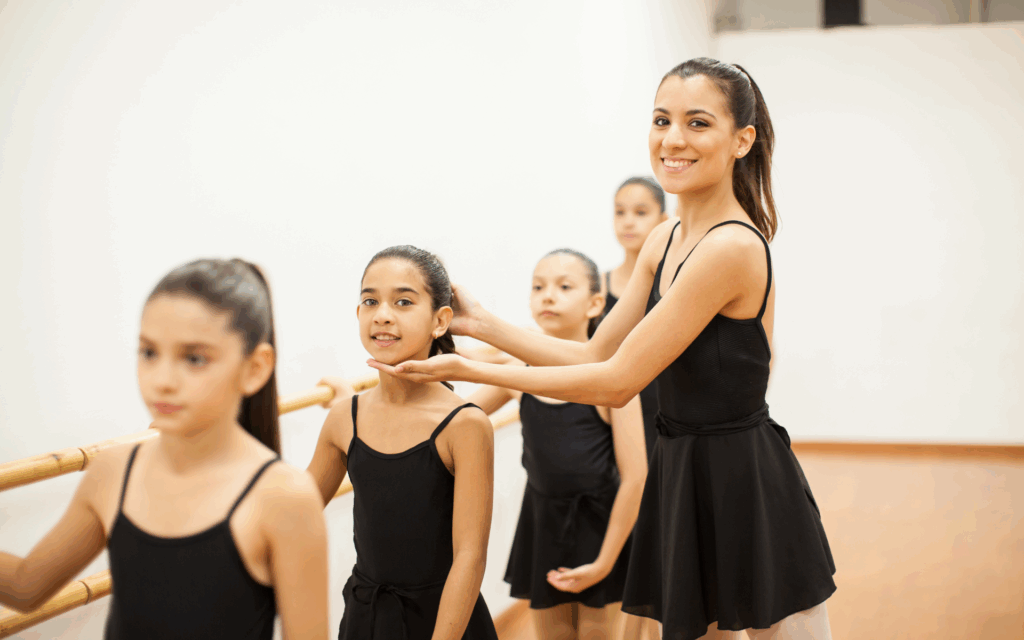
Many aspiring instructors begin by building their skills in technique and choreography, then seek out opportunities to instruct and train students of all ages, from young children to adults, in a variety of styles.
How to become a dance teacher without an education degree?
If your dream is to train students in dance at a private studio, community center, or even open your own space, the path is often more flexible. You absolutely can become a dance teacher without an education degree in these settings!
Many private studios prioritize extensive dance experience, exceptional performance skills, and a proven ability to instruct and train students effectively. What’s crucial here is demonstrating a deep understanding of dance, proficiency in various styles, and the ability to articulate and break down complex movements.
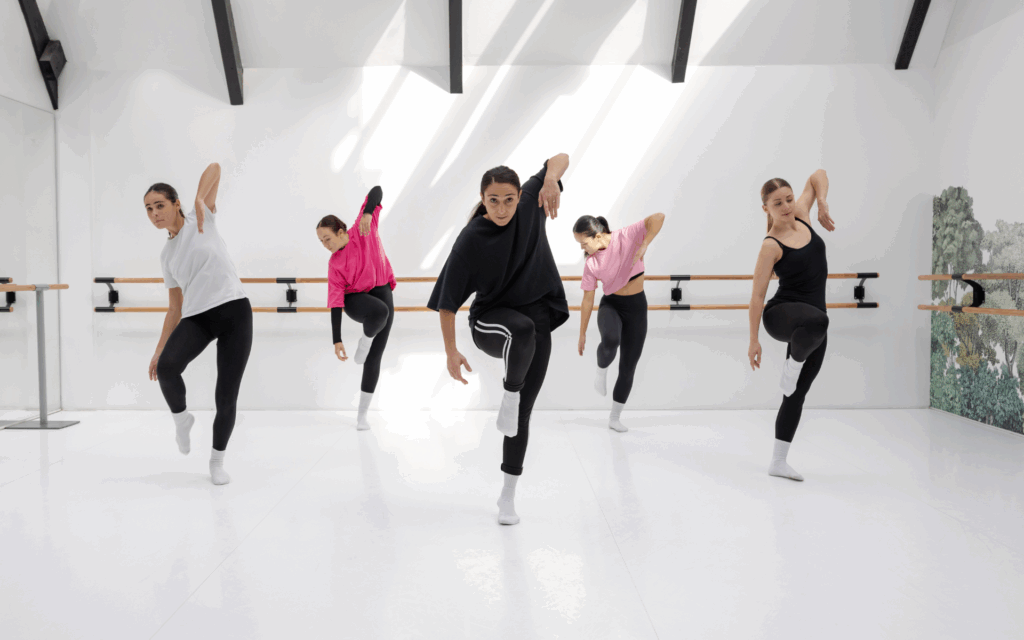
While you might not be working for a prestigious academic institution, the opportunity to shape aspiring dancers and cultivate a fantastic audience remains incredibly rewarding.
Step 1: Decide What Type of Dance Teacher You Want to Be
Before you lace up your teaching shoes, it’s crucial to define your aspirations. This initial step will shape every decision you make moving forward.
Define your career goals as dance classes teacher
What does your ideal dance teaching career look like? Do you envision yourself working with tiny tots taking their first pliés, guiding aspiring professionals towards a stage career, or helping adults discover the joy of movement in a recreational setting?
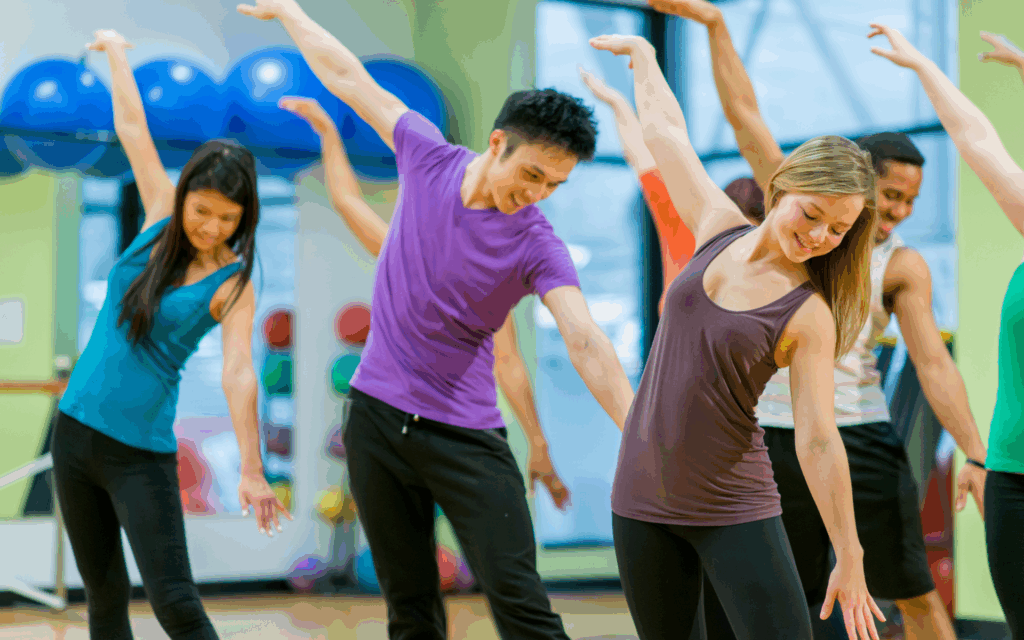
Perhaps you dream of teaching in a public school system, integrating dance into a broader arts curriculum, or specializing in therapeutic dance. Or you want to have a private dance studios or – eventually, a conservatory or dance company.
Your career goals will dictate the kind of training you pursue, the certifications you seek, and even the networking opportunities you prioritize. Consider whether you’re looking for a full-time commitment or a part-time role to complement other interests. Understanding your long-term vision will provide clarity and direction as you embark on this exciting journey.
Identify dance genre you want to specialize
The world of dance is vast and vibrant, encompassing everything from the structured elegance of ballet to the dynamic energy of salsa, hip-hop, folk, the rhythmic storytelling of tap, the expressive freedom of contemporary, and the cultural richness of tap ballroom, swing and salsa.
While many teachers have a broad understanding of various styles, specializing in one or two genres allows you to develop deep expertise, refine your pedagogical approach, and establish yourself as an authority in that particular field.
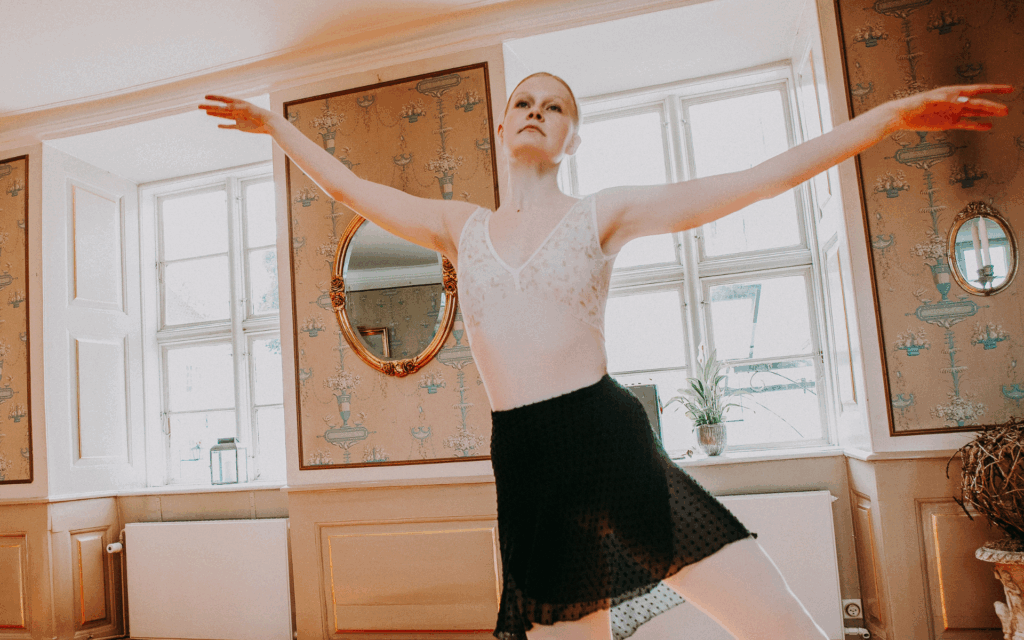
Think about the styles you’re most passionate about, the ones where your technique shines, and where you feel you can most effectively convey knowledge and inspiration. Specialization can also help you target specific student populations and build a reputation within a niche.
Step 2: Get Trained: Education and Teaching Certification (Genre-Specific)
Once you’ve decided on your niche, it’s time to get the proper training that will equip you with both advanced dance skills and effective teaching methodologies.
What is a dance certification?
A dance certification is a formal qualification that validates a dance teacher’s knowledge, skills, and ability to instruct a specific genre or age group effectively and safely.
Unlike a university degree, which often covers a broader range of academic subjects in addition to dance, a certification typically focuses intensely on dance pedagogy, technique, child development (if applicable), anatomy, music theory, and safe dance practices pertinent to the style it covers.
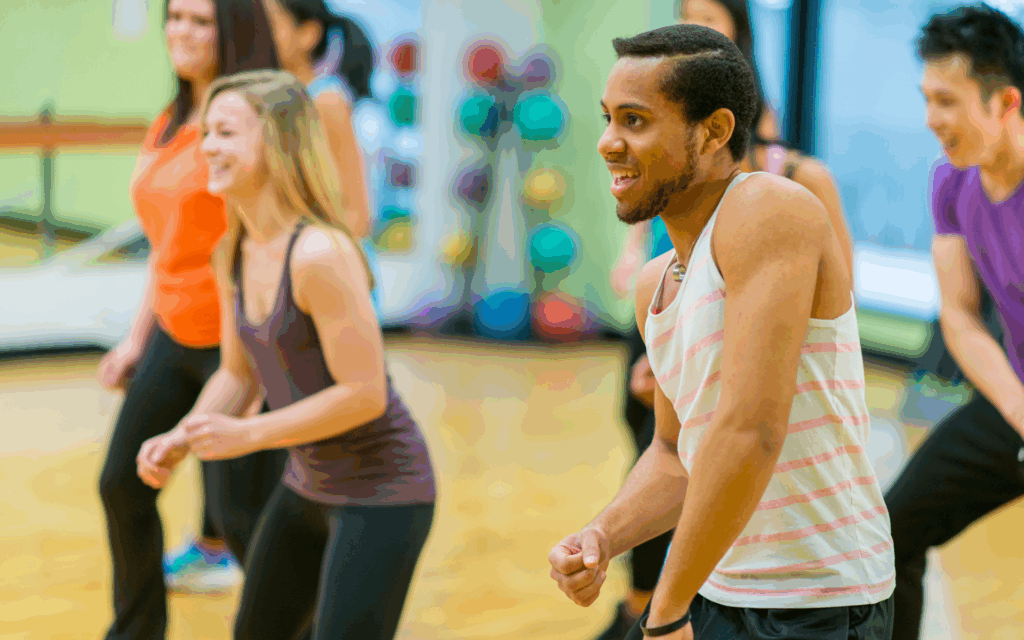
Earning a dance teacher certification demonstrates a commitment to professional standards and often signifies a high level of expertise in a particular methodology. It assures parents and students that the instructor has undergone rigorous training and adheres to recognized industry standards.
What are the essential certifications for teaching different dance genres?
The “essential” certifications often depend on the genre you choose to specialize in and the country or region you plan to teach.
For classical ballet, certifications from organizations like the Royal Academy of Dance (RAD) or the Imperial Society of Teachers of Dancing (ISTD) are globally recognized. For modern or contemporary dance, institutions like the Limón Institute or certifications tied to specific techniques (e.g., Cunningham, Graham) can be highly valuable.
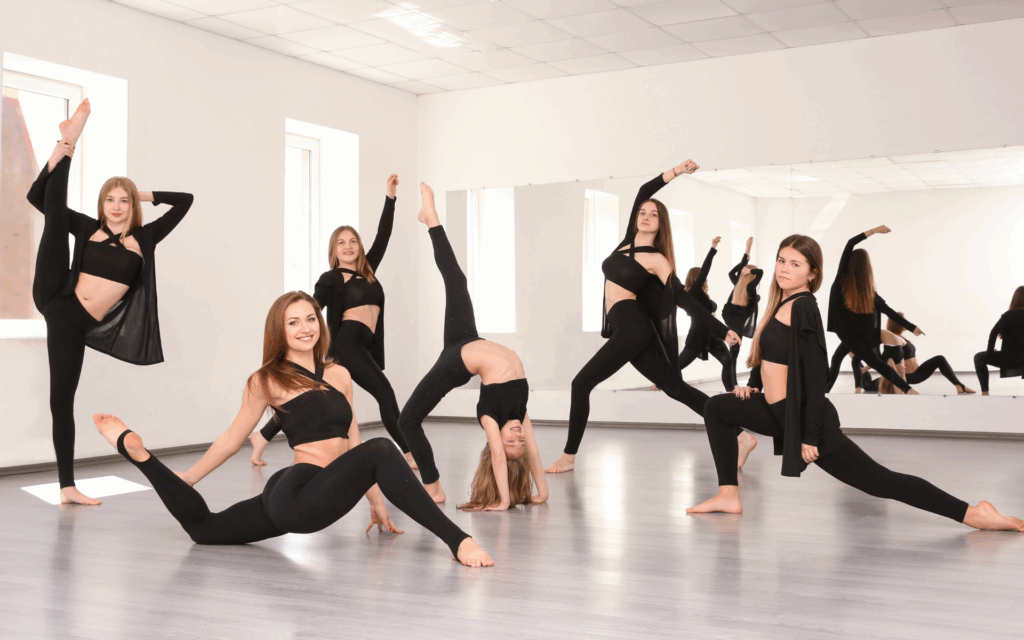
Tap dance often has its own specialized certifications, sometimes through organizations like the ISTD or local tap teacher associations. For genres like hip-hop or commercial dance, while formal certifications are less standardized, a strong performance background, extensive workshop participation, and proven teaching abilities often serve as de facto qualifications.
Regardless of genre, certifications that include first aid, CPR, and child protection training are universally beneficial and often required.
Genre | Major Certification Bodies & Courses | Notable Features |
Ballet | Royal Academy of Dance (RAD), ISTD | Structured progression, global recognition |
Modern/Jazz | ISTD, IDTA | Emphasis on technique and pedagogy |
Ballroom/Latin | IDTA, ISTD | Covers social and competitive styles |
Hip-Hop | IDTA, private certifications | Focus on current trends and choreography |
General Dance | Dance Teacher Certificate (e.g., Mt. SAC) | Pedagogical principles for multiple genres |
What are the key differences between ISTD, RAD, and IDTA certifications?
The Imperial Society of Teachers of Dancing (ISTD), the Royal Academy of Dance (RAD), and the International Dance Teachers’ Association (IDTA) are three of the most prominent dance examination boards, particularly strong in the UK but with global reach.
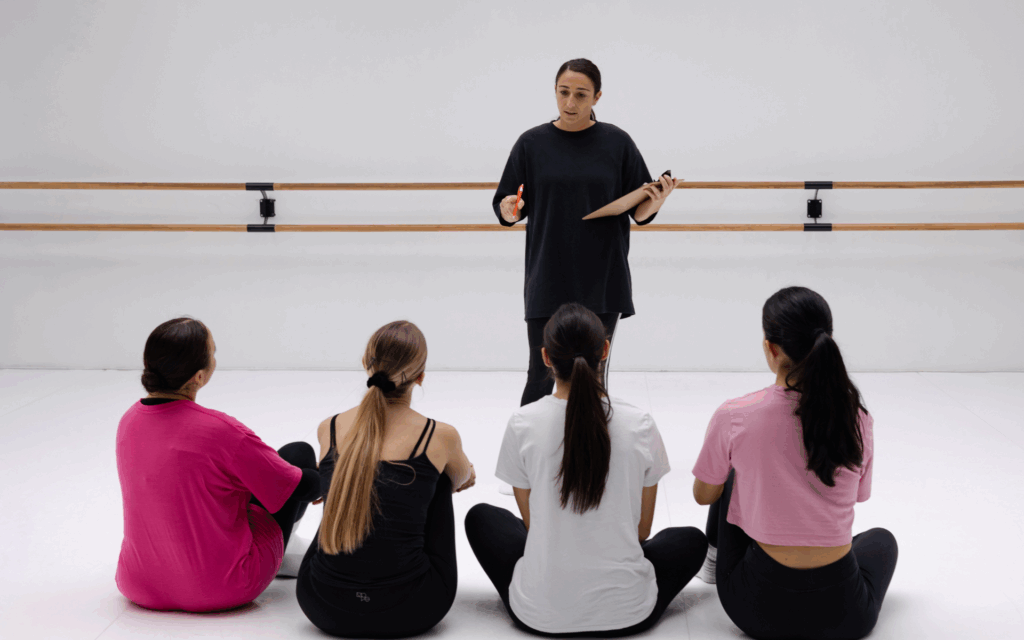
While all aim to promote high standards in dance education, they have key differences in their methodologies, syllabi, and focus:
- Royal Academy of Dance (RAD): Primarily focused on classical ballet, the RAD is known for its highly structured and progressive syllabus, emphasizing sound technique, musicality, and performance quality from an early age. Its vocational grades (Intermediate Foundation to Solo Seal) are particularly rigorous, designed to prepare students for professional ballet careers. RAD teaching qualifications (e.g., Certificate in Ballet Teaching Studies, Licentiate of the Royal Academy of Dance) focus specifically on teaching the RAD ballet syllabus.
- Imperial Society of Teachers of Dancing (ISTD): The ISTD is incredibly diverse, offering syllabi and examinations in a wide range of dance genres. The ISTD offers comprehensive teaching qualifications for each genre, enabling teachers to specialize across multiple disciplines under one umbrella organization.
- International Dance Teachers’ Association (IDTA): While also offering a broad range of styles the IDTA often has a strong focus on popular and commercial dance styles alongside the classical forms. Like the ISTD, the IDTA provides extensive teaching qualifications across its various genres.
Step 3: Gain Teaching Experience and Build a Portfolio
Theoretical knowledge is vital, but practical experience is indispensable. Start by assisting experienced teachers, volunteering in community dance programs, or even teaching small groups of friends or family.
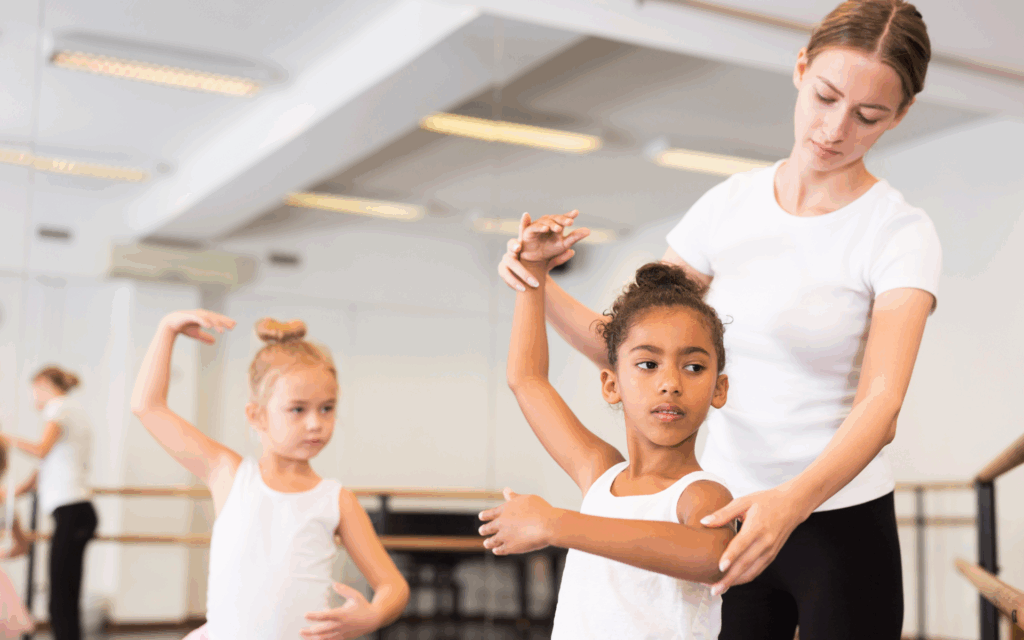
Seek out mentorship opportunities where you can observe seasoned instructors and receive feedback on your own teaching. Document your journey – gather testimonials from students and parents, take photos or videos of your classes (with permission), and keep records of any workshops or special projects you lead.
This will form the foundation of your teaching portfolio, a crucial tool when applying for positions.
Step 4: Decide on Your Future Dancing Career Path
Once you’ve honed your skills and gained experience, you’ll reach a crossroads: how do you want to shape your professional dancing career?
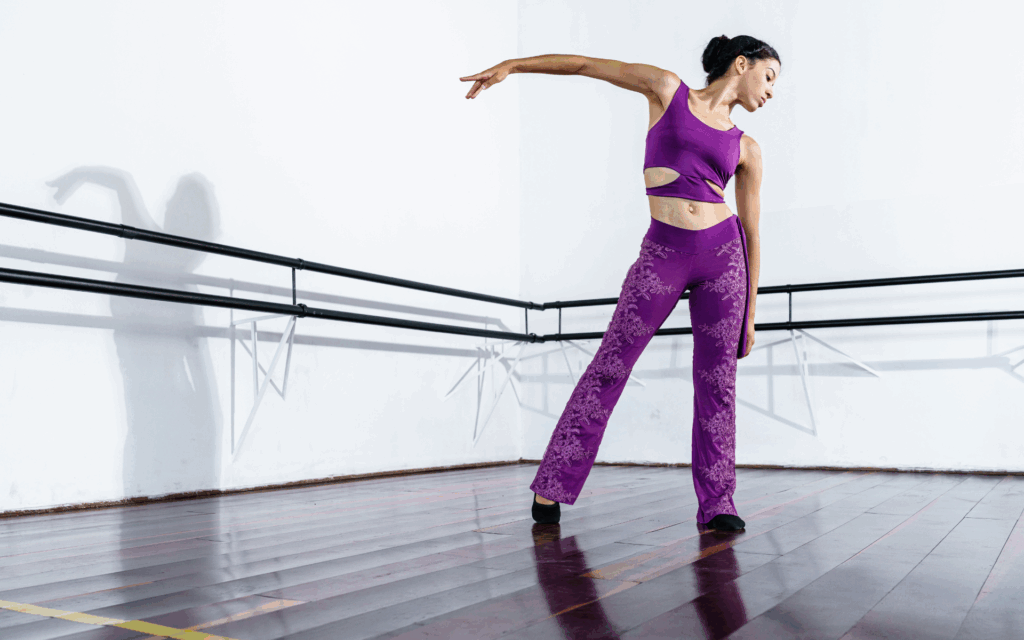
Start Your Own Dance Schools and Private Studios
For the entrepreneurial spirit, opening one’s own private dance school or private studio offers unparalleled creative control and earning potential. This path allows you to curate your own curriculum, establish a unique teaching philosophy, build a brand, and foster a specific community.
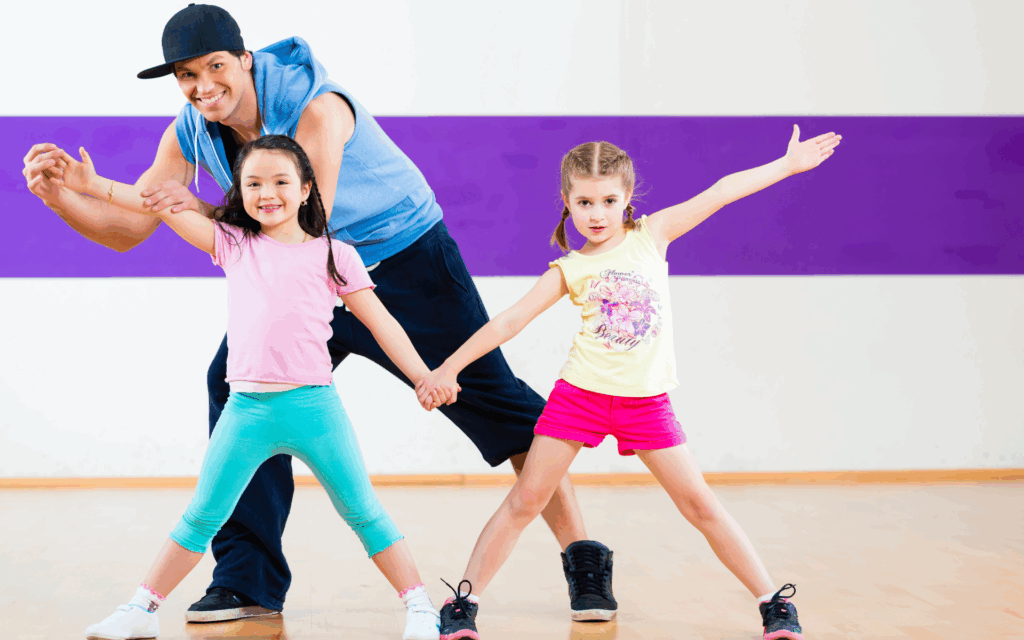
While incredibly rewarding, it also demands significant business acumen, including marketing, financial management, facility maintenance, and staff recruitment. You’ll be responsible for everything from setting schedules and tuition fees to managing registration and ensuring student safety. This option is ideal for those who dream of building a dance legacy and have a strong vision for their artistic and business ventures.
Get Hired as a Dance Teacher
If the idea of managing a business feels overwhelming, or if you prefer to focus solely on teaching, getting hired as a dance teacher is a fantastic option. Opportunities exist in a wide array of settings: private dance academies, community arts centers, public and private schools, universities, fitness centers, cruise lines, and even professional dance companies seeking teaching artists for outreach programs.
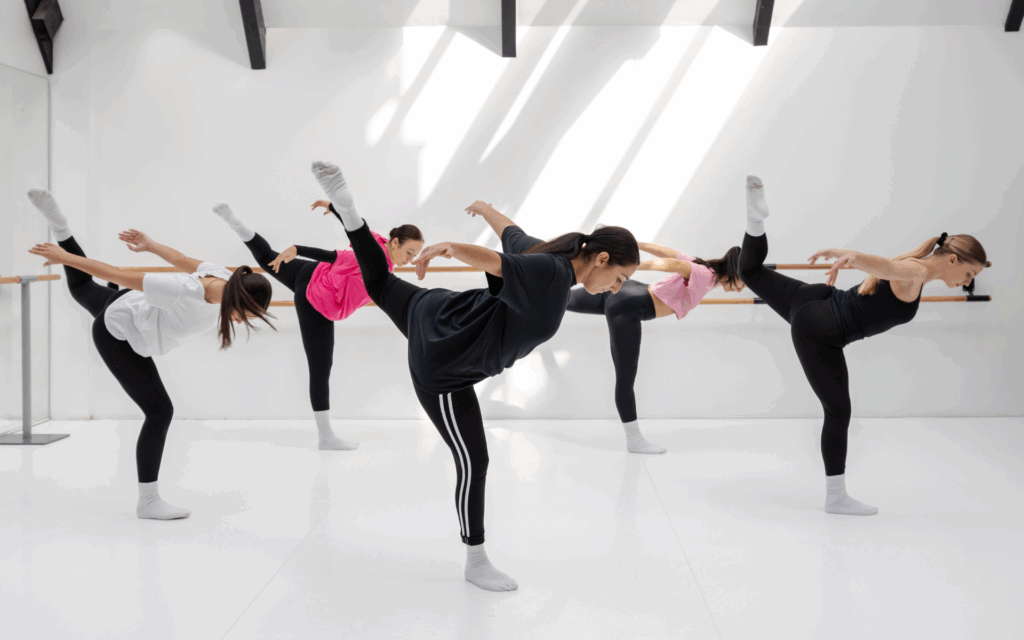
When seeking employment, your teaching experience, genre-specific certifications, and the strength of your portfolio will be key. Networking within the dance community, attending auditions for teaching roles, and actively applying to open positions are all crucial steps. This path allows you to dedicate your energy to instructing and inspiring students, leaving the administrative burdens to others.
Step 5: Create Engaging Dance Class Experiences
Being a dance teacher is more than just demonstrating steps; it’s about igniting passion and fostering growth. To ensure success as a dance instructor, you must consistently create engaging dance class experiences that keep students motivated and coming back for more.
This means going beyond simple exercises, technique-based drills and incorporating elements that inspire creativity and personal expression. Whether you’re teaching forms among them ballet, jazz, modern, tap, ballroom, swing, salsa, hip hop, folk, or even pole dancing, variety is key.
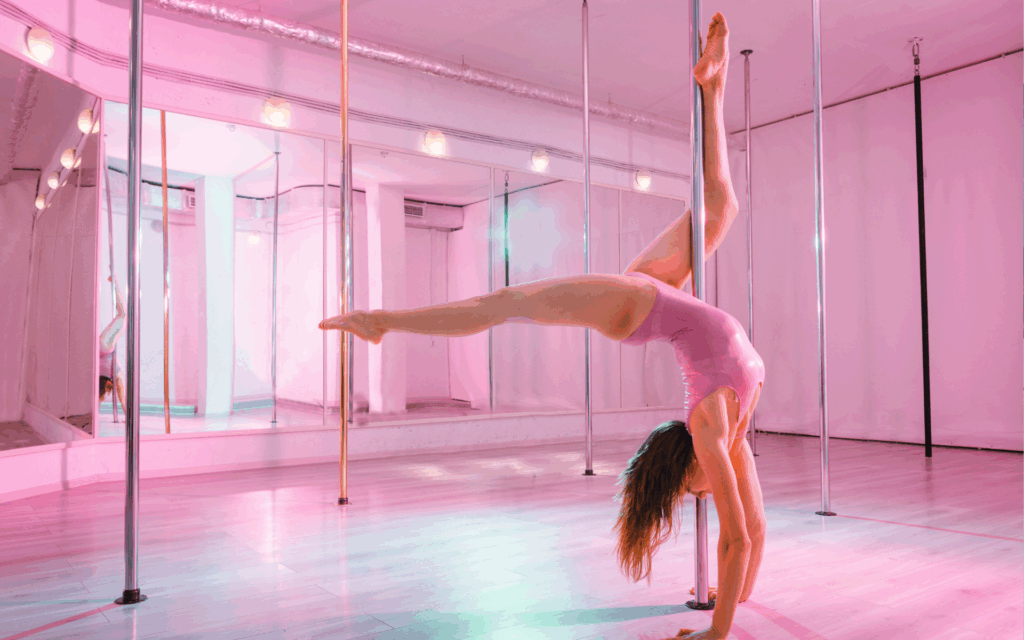
Mix up your routine with creative warm-ups, improvisational exercises, collaborative choreography projects, and performance opportunities. Focus on building a supportive and inclusive atmosphere where every student feels comfortable taking risks and celebrating their progress.
Remember, a fantastic public school dance program or a thriving private studio cultivating a fantastic community thrives on the energy and inspiration its teachers bring to every lesson.
Step 6: Leveraging Technology to Gain More Dancing Students
In today’s digital age, technology is a powerful ally for dance teachers looking to expand their reach and streamline their operations. For independent teachers or studio owners, embracing management software can revolutionize how you attract and retain students.
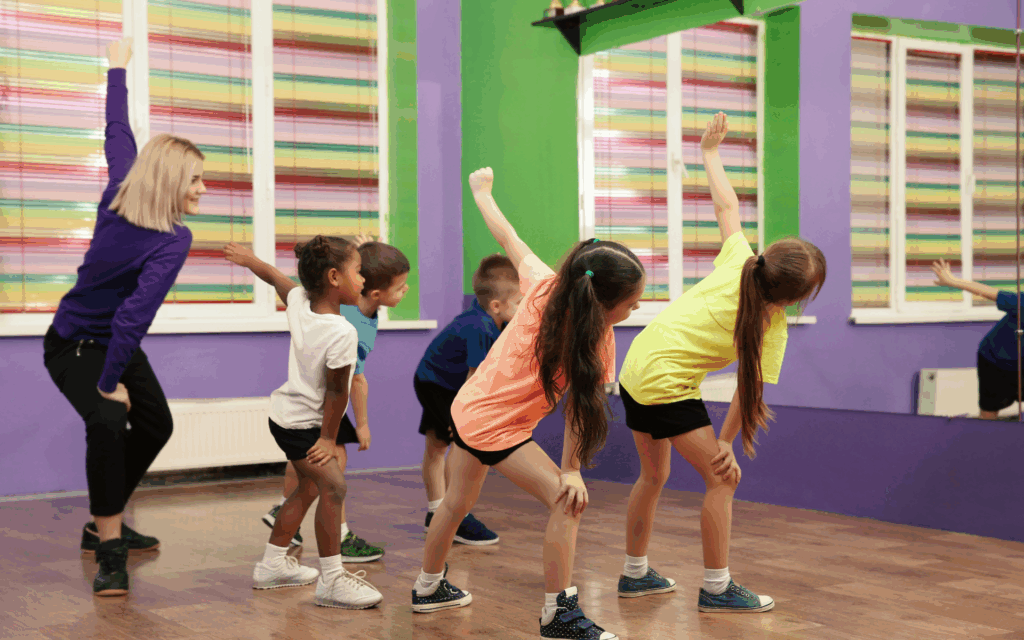
Consider platforms like WodGuru, which is specifically designed for fitness and dance studios. WodGuru helps you automate scheduling, manage memberships, process online payments, and even communicate with your students through a branded mobile app.
Imagine students being able to book classes 24/7, receive automated reminders, and track their progress, all without you lifting a finger for administrative tasks. This frees up invaluable time, allowing you to focus on what you do best: teaching dance and refining your exercises technique-based drills.
By leveraging such tools, you can efficiently handle a larger student base, enhance the student experience, and ultimately gain more dancing students.
Step 7: Build Your Personal Brand and Grow Your Teacher Career
To grow your dance teacher career, actively cultivate this brand. This might involve creating a professional website or engaging heavily on social media, sharing clips of your classes, student successes, and your own dance journey.
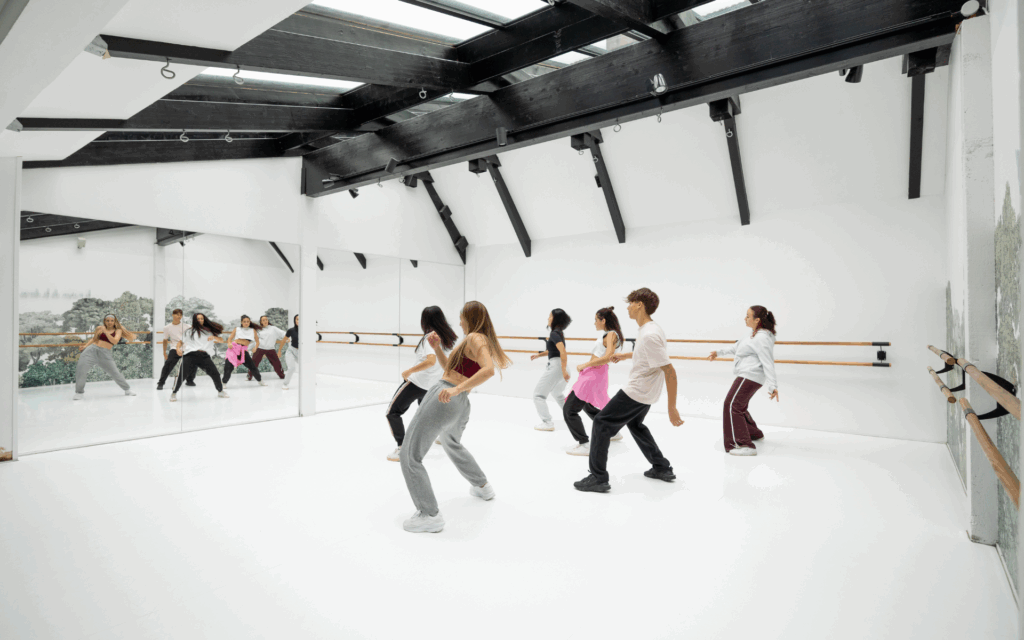
Network with other dancers, choreographers, and studio owners. Attend workshops and conferences to expand your knowledge and meet potential collaborators or employers.
Even if your background is from a prestigious conservatory or dance company, or if you hold a bachelor’s degree in dance, continuous learning and self-promotion are essential.
Step 8: Turn Your Passion Into a Scalable Dancing Business
For many dance teachers, the ultimate dream is to transform their passion into a sustainable and scalable business. This could mean expanding your private studio into multiple locations, developing online courses, or creating specialized workshops and intensives that attract dancers from further afield. Scaling requires a strategic mindset.
The path to success as a dance entrepreneur often involves building a strong team of instructors, delegating responsibilities, and continuously innovating your programs to meet market demands.
Dance Instructor Salary
Dance teacher pay – so, what’s a dance fitness instructor salary?

- How much does a dance teacher make per hour? In the United States, the average hourly pay for a dance teacher is approximately $25.30.
- How much does a dance teacher make a year? With a typical annual salary ranging from $36,000 to $62,000.
Public school dance teachers or those in a fantastic public school dance program may earn a set salary based on a pay scale, often requiring a teaching license or teacher certification and a bachelor’s degree in dance or an education degree.

University-level dance teachers with a degree in dance (even a master’s degree) often command higher salaries. Private studio instructors often work on an hourly or per-class basis, with earning potential tied to their class popularity and ability to attract students. Additional revenue can come from private lessons, workshops, and choreography commissions.
Step 9: Stay Updated on the Teaching Dance Trends
The dance world is constantly evolving, with new styles, techniques, and teaching methodologies emerging regularly.
To maintain your relevance and continue offering cutting-edge instruction, it’s vital to stay updated on the teaching dance trends. This means actively engaging in professional development, attending workshops, participating in online forums, and keeping an eye on popular culture.
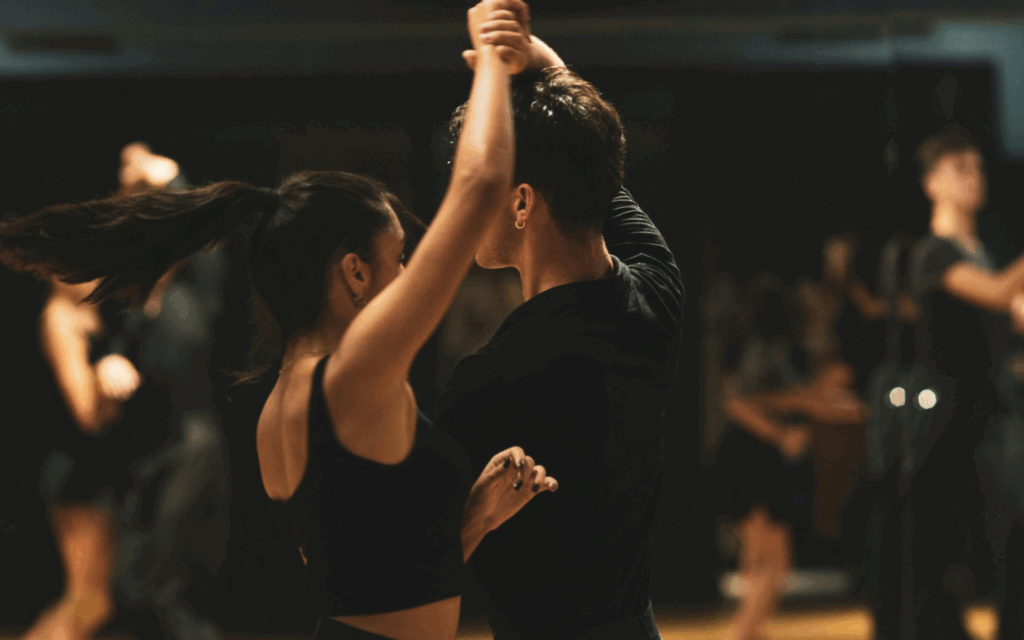
Trends may include the rise of hybrid dance forms that may incorporate dance techniques from various forms among them ballet, jazz, modern, tap, ballroom, swing, salsa, hip hop, folk, and pole dancing.
Technology, such as AI-assisted choreography and virtual dance spaces, is also increasingly influencing how dance is taught and consumed. By being a lifelong learner and adapting your curriculum to reflect contemporary interests and advancements, you ensure your classes remain fresh, exciting, and highly sought after by students.
FAQ
To gain dance teaching experience without a degree, there are several effective and accessible pathways that can help you build your skills, credibility, and professional network:
- Start by assisting established dance instructors at local studios or community centers.
- Offer to teach dance classes at community centers, after-school programs, or youth groups.
- Apprenticeships and Internships: Seek out apprenticeship or internship opportunities at dance studios.
- Start with Beginners or Friends: Begin by teaching friends, family, or small groups.
- Online Teaching: Consider teaching online classes or workshops.
- Take Workshops and Continuing Education: Enroll in dance teacher training workshops, online courses, or certification programs to enhance your skills and credibility, even if you don’t pursue a full degree.
- Network and Build Relationships: Attend dance events, performances, and workshops to meet other instructors and studio owners. Networking can lead to mentorship and job opportunities.
Yes, it is possible to start gaining experience and even begin teaching dance at 16, though the type of teaching role and its formality will vary. While you generally won’t be able to be a fully certified teacher in public schools (which typically requires a university degree and state teaching license/certification), many private dance studios are open to hiring younger, experienced dancers as assistant teachers or even lead instructors for younger, beginner classes.
Dance teachers are most commonly referred to as Dance Teachers or Dance Instructors. Depending on the context, they might also be called:
- Dance Educators: Particularly in academic or formal educational settings (like schools or universities).
- Dance Masters/Mistresses: A more traditional or formal title, sometimes used in ballroom or historical dance contexts.
- Choreographers: While a choreographer’s primary role is to create dance routines, many dance teachers also choreograph for their students or performances, blurring the lines between the two roles.
- Coaches: Especially in competitive dance settings.
- Professors: In a university or conservatoire setting where they hold an academic position.

